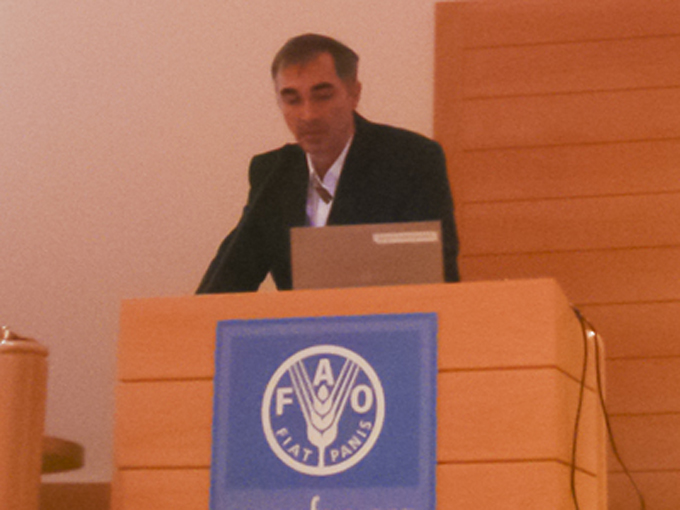The conference “Soil spectroscopy: the present and the future of soil monitoring” was held by the Food and Agriculture Organization of the United Nations (FAO) between December 4th and 6th, 2013 in Rome, Italy. This event was sponsored by the European Commission, and included over 70 experts from many different countries and five special guest lecturers, one from each continent of the globe.
Professor José Alexandre M. Demattê, from ESALQ Soil Science Department (LSO), represented Brazil and Latin America. According to the faculty member, FAO is a leader in international efforts directed to hunger and food insecurity eradication. This organization has been researching new technologies that provide consistent improvements to agriculture systems and productivity increments. “The specific objectives of this meeting were to evaluate global practices related to understanding soil through the use of sensors, enabling decision-making in public policies.”
Technology - The event focused on spectroscopy, a technology tool studied for over 20 years. The technique consists in the interaction between electromagnetic energy (light) and a soil sample. The reflected light can provide a lot of soil information, including clay and carbon content. Thus, the sensors capture data and allow material quantification.
Demattê notes that a soil which is not adequately studied and monitored may bring problems related to water sources and siltation of rivers, in addition to failure to reach optimal levels of productivity. “Moreover, the agricultural pressure and expansion increase the risk of depletion due to erosion systems and inadequate application of pesticides and fertilizers. It is necessary to optimize the use of soil considering environmental quality.” Thus, remote sensing is an ever present issue, as it allows a time-efficient soil map design, which in turn is the basis for agricultural and environmental planning. “Nowadays we understand the Mars soil features through this technology. Now the challenge is to put it at the service of people,” he says.
The faculty member presented the current researchs developed in Brazil, specially the studies developed by LSO research team. He spoke about reflectance spectroscopy as an innovative technology in the soil study and its applications in soil mapping and classification, eroded areas identification and soil monitoring for contaminants.
This pioneer meeting also involved the development of a protocol for performing measurements using sensors, standardizing procedures among researchers worldwide. The next step will consist in data comparison among laboratories. “In a near future, the analysis of some elements such as carbon and clay content made by traditional laboratories is expected to be replaced by this technology,” explains the teacher.
One of the foundations of the system is the creation of soil spectral libraries. “It consists in collecting soil samples from an entire region or country and obtaining the spectrum of each sample as a fingerprint. Such information is stored in a database that can be compared with unknown samples.” In this regard, Demattê is coordinating the development of the Brazilian Soil Spectral Library, which today has many participating researchers. Many other countries around the world are doing the same work, such as Australia, Africa, United States and European countries.
This new technique can be used in the laboratory or field. It is intended to be faster and cheaper, in addition to not requiring the use of chemicals and not altering the analyzed sample. “This technology will enable real-time analysis in several areas of science,” he concludes.
The Brazilian Soil Spectral Library can be accessed at www.bibliotecaespectral.wix.com/esalq/english.


